In Photos: Worm Grows Heads and Brains of Other Species
A flatworm can regenerate its head and brain in the shape of those in other planarian species, researchers have found. Here are images of the bizarre creatures and the experiment that revealed this odd shape-changing ability. [Read the full story on the franken flatworms]
Pointy snout
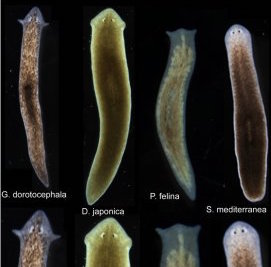
G. dorotocephala, a freshwater flatworm (left) a few centimeters long, has a pointy snout and nearly triangular ear-like structures (auricles). Other flatworm species (right) have a variety of head shapes, from nearly triangular to very rounded. Along with these head variations come changes in brain size and shape. (Photo credit: Center for Regenerative and Developmental Biology, School of Arts and Sciences, Tufts University)
Engineered flatworm
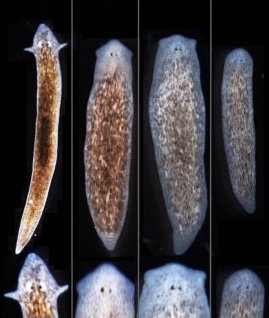
By altering gap junctions — communication structures that allow cells to "talk" via electrical impulses — researchers at Tufts University were able to alter the architectural of G. dorotcephala so that it's head and brain mimicked the shape of other species. The original form is seen at left, and the variations at right. These changes were made without any manipulation of the flatworm's genome, highlighting the importance of non-genetic influences on development. (Photo credit: Center for Regenerative and Developmental Biology, School of Arts and Sciences, Tufts University)
Head-to-head
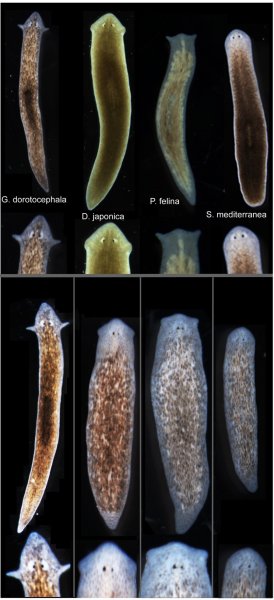
G. dorotocephala and three other species of flatworm, at top, with close-ups of the head shape of each. The bottom images show G. dorotocephalia in its original form (left) and after manipulation of the gap junctions. This manipulation made the flatworm's head grow like those of other flatworm species. (Photo credit: Center for Regenerative and Developmental Biology, School of Arts and Sciences, Tufts University)
Sign up for the Live Science daily newsletter now
Get the world’s most fascinating discoveries delivered straight to your inbox.
Brain morphology
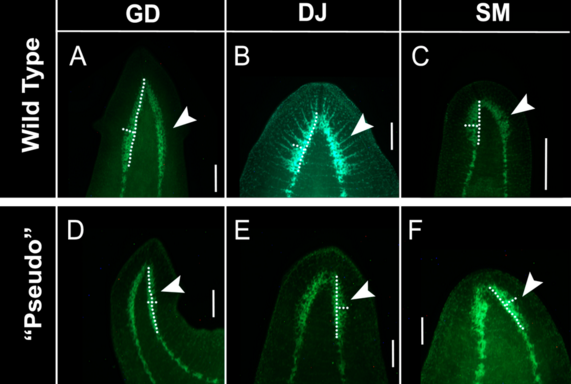
Manipulating the communication channels between cells did not just create skin-deep changes in the flatworm heads. Their brains were altered, too. The top row of this image shows wild, unaltered brains of the flatworm species G. dortocephala (left), D. japonica (center) and S. mediterranea (right). At bottom are G. dorotocephala worms treated with the communication blocker octanol, which alters the connections between cells. From left to right, these altered worms grew brains that resembled those of their original species, of D. japonica and of S. mediterranea.
(Photo credit: Emmons-Bell, et al. Gap Junction Blockade Stochastically Induces Different Species-Specific Head Anatomies in Genetically Wild-Type Girardia dorotocephala Flatworms. Int. J. Mol. Sci. 2015, 16(11), 27865-27896; doi:10.3390/ijms161126065)
Migrating stem cells
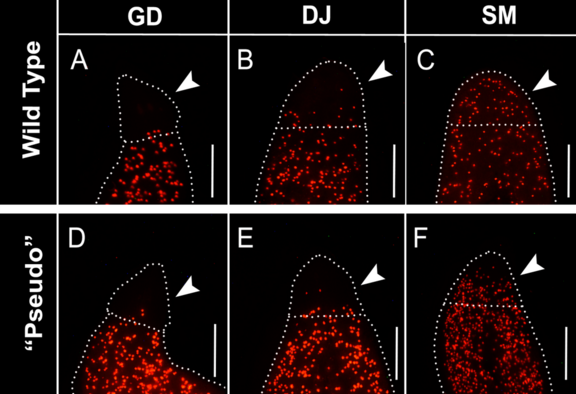
Flatworms are capable of altering their head shapes because they're able to regenerate — cut one in half, and you'll soon have two flatworms. This ability comes courtesy of neoblasts, stem cells that are totipotent, meaning they can become any cell type in the body. In humans, cells are totipotent only in the first few days of embryological development.
In flatworms, neoblasts migrate to an injured area to rebuild it. This image shows the differeing distribution of neoblasts in flatworms treated with octanol, which altered their cell communications. (Photo credit: Emmons-Bell, et al. Gap Junction Blockade Stochastically Induces Different Species-Specific Head Anatomies in Genetically Wild-Type Girardia dorotocephala Flatworms. Int. J. Mol. Sci. 2015, 16(11), 27865-27896; doi:10.3390/ijms161126065)
Reverting back
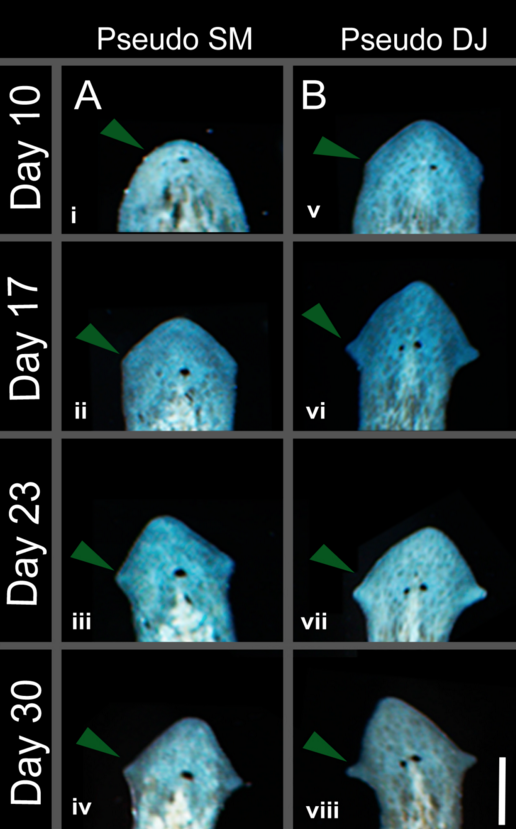
The changes in the flatworm heads were impermanent (though researchers have induced permanent changes in other species). Over 30 days, the flatworms reverted back to their original head shape. Here, the gradual change from induced S. mediterranea head shape (left) and from induced D. japonica head shape (right), is visible from Day 10 to Day 30 after the original transformation.
(Photo credit: Emmons-Bell, et al. Gap Junction Blockade Stochastically Induces Different Species-Specific Head Anatomies in Genetically Wild-Type Girardia dorotocephala Flatworms. Int. J. Mol. Sci. 2015, 16(11), 27865-27896; doi:10.3390/ijms161126065)
Modeling heads
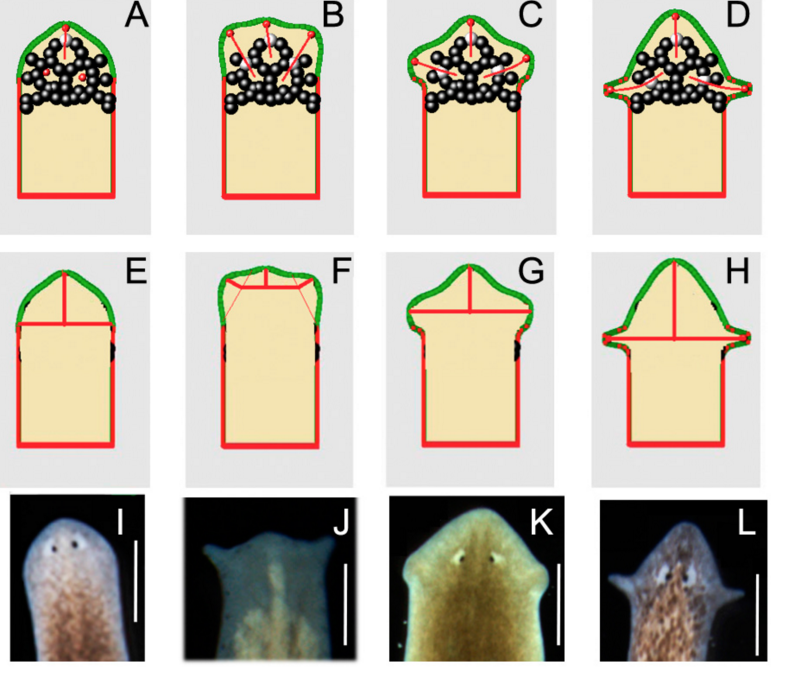
A computational model shows how the differently shaped heads arise because of the deactivation of different cells in each head shape. Researchers hope these findings will lead to a better understanding of how development works, along with potential answers for the emerging field of regenerative medicine, which aims to grow new tissues or organs to replace failing or damaged ones.
(Photo credit: Emmons-Bell, et al. Gap Junction Blockade Stochastically Induces Different Species-Specific Head Anatomies in Genetically Wild-Type Girardia dorotocephala Flatworms. Int. J. Mol. Sci. 2015, 16(11), 27865-27896; doi:10.3390/ijms161126065)
Follow Stephanie Pappas on Twitter and Google+. Follow us @livescience, Facebook & Google+.

Stephanie Pappas is a contributing writer for Live Science, covering topics ranging from geoscience to archaeology to the human brain and behavior. She was previously a senior writer for Live Science but is now a freelancer based in Denver, Colorado, and regularly contributes to Scientific American and The Monitor, the monthly magazine of the American Psychological Association. Stephanie received a bachelor's degree in psychology from the University of South Carolina and a graduate certificate in science communication from the University of California, Santa Cruz.









